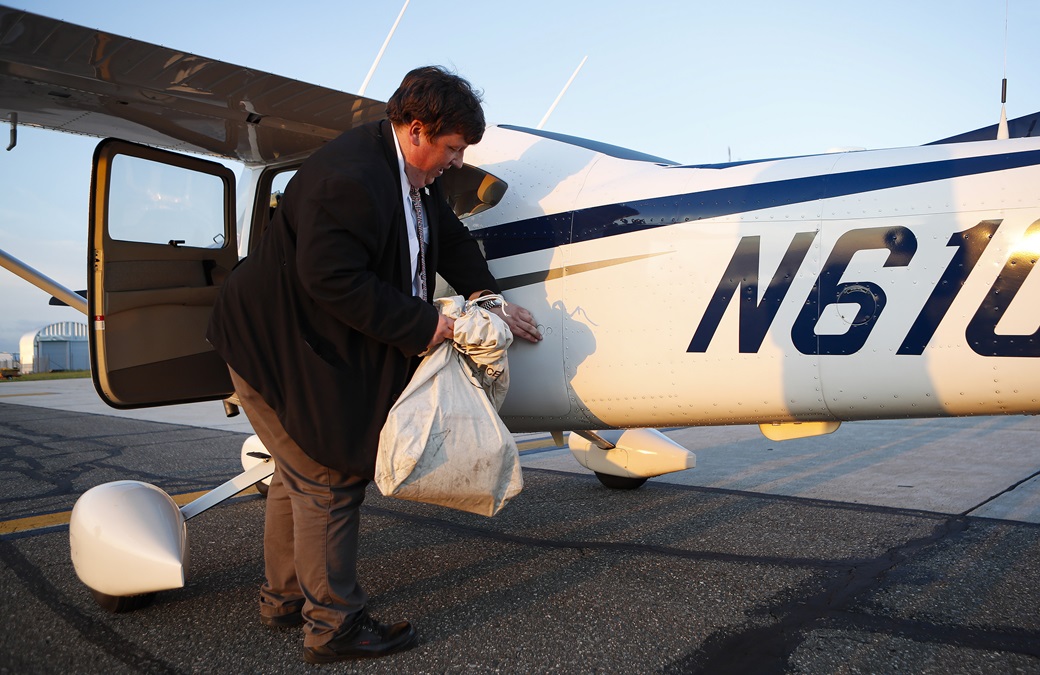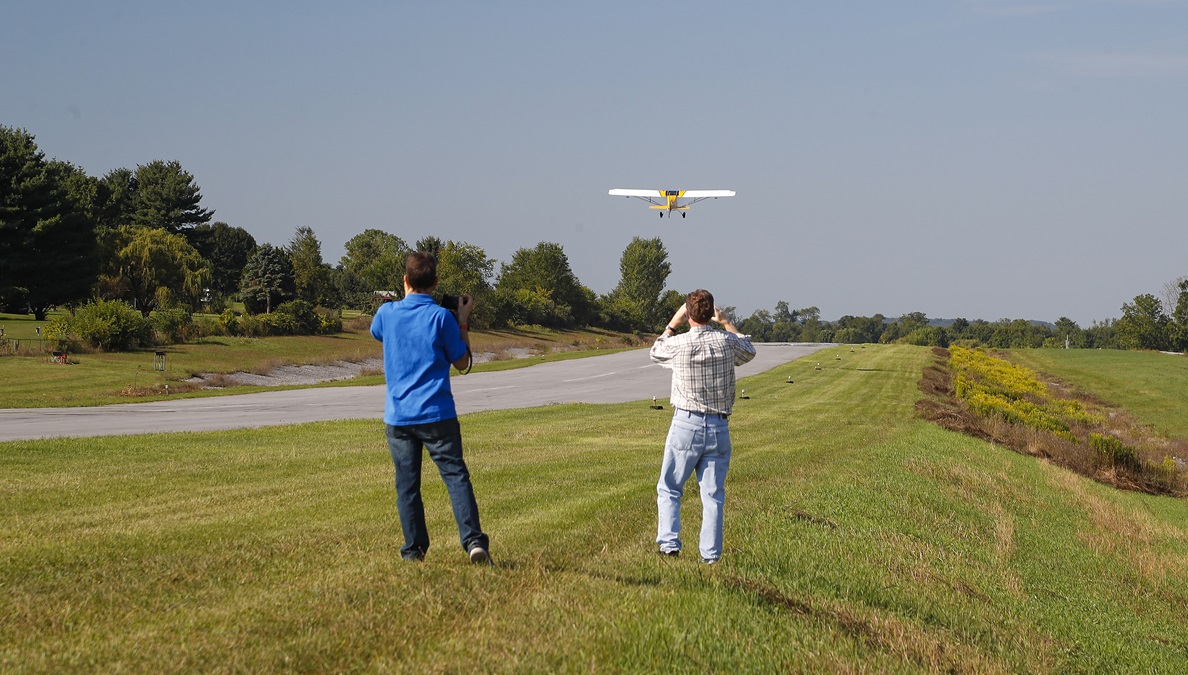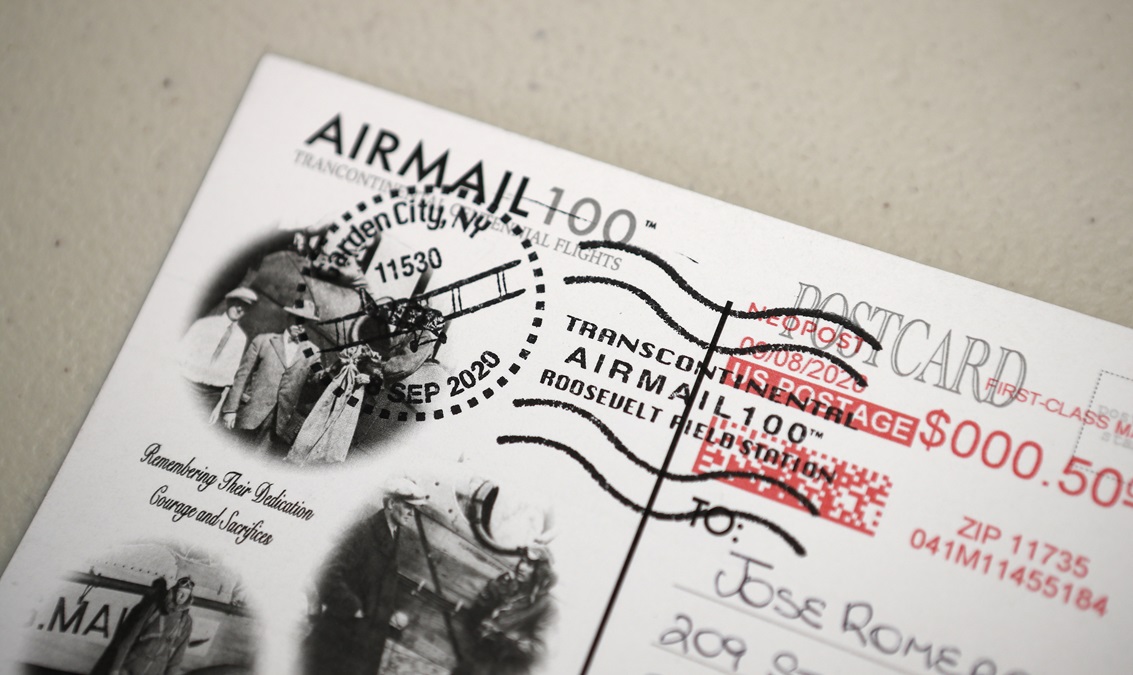Airmail relay launched
Pilots take turns hauling mail to mark 100 years of transcontinental service
It wasn’t glamorous or sexy. It wasn’t greeted with fanfare and assembled crowds—COVID-19 kept that from happening. But it was momentous and, for one pilot, extremely gratifying.
“As both a pilot and history buff, I could not be more proud or happy to be a part of this commemoration of air mail history, and I was thrilled to be given the role of carrying the first leg’s payload,” said Christopher Freeze. “The air mail system that these flights established became the basis for which reliable transportation via the skies became possible and formed the powerful economic engine that is the modern airline industry.”
The first attempt at mail delivery via airplane was a short hop in 1911, and the mail was unceremoniously dumped by the pilot—Earle Ovington in a Blériot monoplane—to the ground. The advent of the airplane had appeared promising for faster mail delivery and attempts had been made in the years following the Wright brothers’ successes, a global war that saw airplanes in combat, and a barnstorming era of traveling airshows. Those who hoped the airplane could expedite delivery realized routes like those of the railway would need to be established and that’s what came to be in the early days of September 1920. An airplane took off from New York’s Long Island and hopped across the country in 15 scheduled legs, ferrying sacks of mail.
Bill Moore, a Nebraska writer and pilot, created Air Mail 100 Centennial Flights, an event that retraced the 2,560-mile flight plan with a relay of pilots carrying 60-pound sacks of mail. Beginning at Republic Airport in Farmingdale, New York (the original start was at the now-defunct Hazlehurst air base in Mineola), and crossing the nation for four days, general aviation pilots in a variety of aircraft began flying the original legs (or a close proximity) on September 8. Carrying copies of the “1921 Pilot’s Directions New York to San Francisco” as their logbook, the pilots carried sacks of mail, postcards collected by EAA Young Eagles and Scouts, across the country.
“There is a reason few sane people try something like this: it’s challenging but so very, very much worth it,” said Moore after the successful completion of the first day’s flights. “We have been blessed with good weather through the first three segments from Republic to Williams County. The last leg will be the first to encounter IFR conditions, but the volunteers on that leg have stepped up with some serious hardware, a Cessna 421.”
Of the many pilots who volunteered to fly one of the legs, Freeze, a Virginia-based CFI, was chosen to lead. He flew a Cessna 182. In trail were AOPA pilots Warren Morningstar and Keith West in an Beechcraft Bonanza A36, documenting the first flight.
Ironically, as Freeze began his approach to the first stop—Bellefonte, Pennsylvania (an original stop on the 1920 relay)—a 1930s Pitcairn Mailwing biplane landed ahead of him, confusing those assembled because it carried the livery of a historic airmail aircraft. It turned out that pilot just wanted to be present for the festivities. With onlookers distracted, Freeze landed unnoticed, unloaded his sack of mail, and brought it to the several U.S. Postal Service and local dignitaries. The sack of mail was then loaded into another aircraft for the next leg of the trip. On September 8, four stops were scheduled with an overnight outside Chicago. On September 9 and 10, four more stops were scheduled (with options for transportation by car if issues arise). The final delivery was scheduled for September 11 with a planned de Havilland seaplane landing in the Sacramento River near Marina Green (Montgomery Airfield 1920–1944) in California. There was concern the flights would be hampered by challenging weather conditions—snow forecast in the Rockies in September!
“Maybe the most engaging leg was the one flown in a Rans S–7 homebuilt,” related Moore. The aircraft's “performance most closely matched that of the old de Havilland DH–4s, while flying over one of the most dangerous stretches of terrain airmail pilots had to deal with in 1920. It killed more than its share of fliers. I was relieved when pilot Gene Salvatore landed, mission accomplished.”
“As the Cessna 182 flew over the route between New York and Pennsylvania, my copilot and I were blessed with fair skies and smooth air,” said Freeze. “But that speed and comfort exist only because of those who came before. We could look down upon the mountain ranges below with awe, not fear. Those pilots of yesteryear, in open cockpits flying canvas wings, were indeed brave, and it was an honor to remember their service and sacrifice for the betterment of aviation and our nation.”










